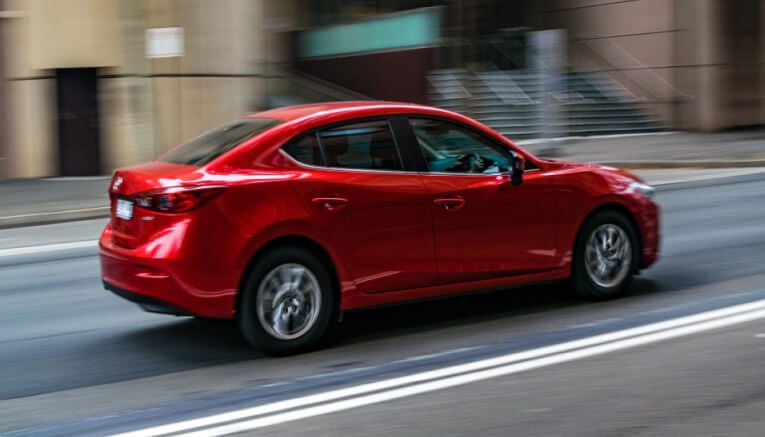Accurate mileage reimbursements are an important part of any company with mobile employees. With that said, there are several common methods of mileage reimbursement.
Some of the major ones include cents-per-mile, car allowance, fuel cards, and FAVR. Today, we’re going to be discussing the merits and differences between the two of them: cents-per-mile reimbursement and car allowance.
Mileage Reimbursement vs. Car Allowance: What Do They Mean?
Cents-Per-Mile Mileage Reimbursement Explained
Cents-per-mile mileage reimbursement is the simplest – and thus more common – method of mileage reimbursement. Employees who use their personal vehicles for work are reimbursed a certain amount of money for each mile driven.
This reimbursement rate per mile can be anything – even nothing! In the United States, there is no federal mandate requiring companies to reimburse their team’s mileage or expenses, though some states have their own specific requirements.
To make things simple, the IRS conducts a study each year on the fixed-and-variable costs of operating a motor vehicle. Using this data, it comes up with a recommendation on what the average driver in the United States should be reimbursed.
Related: IRS Mileage Rate Explained | How Is The Standard Mileage Rate Determined?
Costs such as gas prices, insurance, depreciation, and more go into determining this rate. As of 2025, the current IRS rate for business mileage is $0.70 per mile.
If a business were to use this rate, that would mean they would be reimbursing their team $0.67 for every mile they drive while conducting business. If they drove 100 miles for their company, they would get $70.00 back from the company.
An important thing to consider is that, unless you reimburse above the recommended IRS rate, CPM reimbursement payments are not taxed. If you reimburse above that rate, the additional payment will be taxed as income.
This method requires your team to fill out mileage logs and submit them to your company to process and approve their reimbursement. Since manual mileage logs are clunky, time-consuming, and inaccurate, we recommend your team use a modern automatic mileage tracker app.
Cons of Cents-Per-Mile Mileage Reimbursement
The biggest potential problem that can come with a CPM system is overreported mileage, which can lead to over-reimbursement. According to an internal TripLog study, drivers using manual tracking methods can overreport their mileage by as much as 28%.
Typically, mileage gets overreported when drivers incorrectly fill out their mileage logs, whether intentional or unintentional. They make a poor estimation on how far they drove, and employers end up paying them more than they deserve.
Related: Mileage Guide for Employers
Drivers aren’t the only employees affected by manual mileage logs. Payroll specialists, HR clerks, and others who will be handling those logs are going to have to deal with processing large stacks of paper mileage logs, which can be incredibly cumbersome.

As discussed previously, the best way to avoid overreported mileage is to have your team use a mileage tracker app like TripLog. Schedule a complimentary demo request today to see how TripLog can save your company thousands of dollars and dozens of labor hours per employee every year!
Car Allowance Explained
A car allowance is a fixed amount of money that you give to your team designed to cover the expenses of using their vehicles for work. This is by far the simplest method of mileage reimbursement.
Companies simply set a lump reimbursement sum that they feel is fair and give their employees that sum at the beginning of each month. That’s it!
Cons of a Car Allowance Program
The simplicity of a car allowance program has its benefits, but there are many issues as well. For example, choosing a fair amount of money to provide as an allowance can be difficult.
For many businesses, their employees may drive different amounts. Some employees might drive only a few dozen miles, whereas others may drive hundreds.
If both the employee who drove a dozen miles and the employee who drove 500 miles get a $500 monthly sum, that may result in an unfair system. There’s a good chance you’re going to be underpaying some employees and overpaying others.
Another major issue of car allowance compared to a CPM program is the tax liability. The IRS sees car allowances as compensation rather than a travel reimbursement.
Related: Top 5 Company Mileage Tracker Misconceptions
This means that any money paid to employees as a car allowance is taxable. This also means that your team will see less of the allowance due to it being taxed.
Why is Car Allowance Taxed But Not Mileage Reimbursement?
The main reason why the IRS taxes car allowances is because the business use of these payments are not substantiated. You could substantiate the mileage, but this adds additional complications.
Car Allowance Plus Mileage Reimbursement | Can You Use Both?
When it comes to compensating employees for using their personal vehicles for business purposes, companies often grapple with the decision between offering a car allowance or mileage reimbursement. Could companies instead choose to use both?
The Dual-Benefit Approach
Offering both a car allowance and mileage reimbursement can be seen as a dual-benefit approach. The car allowance typically covers fixed costs that an employee incurs, such as insurance, car payments, or general maintenance.
In contrast, mileage reimbursement in this system could directly correlate with the distance driven, primarily addressing variable costs like fuel and wear and tear.
Car Allowance Plus Mileage Reimbursement Advantages
- Comprehensive Coverage: This method can be more encompassing, ensuring that employees feel adequately compensated for all vehicular costs related to their job.
- Flexibility: It provides a safety net for employees who might drive infrequently (and thus benefit from the allowance) and those who drive extensively (and benefit from mileage).
- Attract and Retain Talent: Offering both might make a company more attractive to potential employees and retain current ones.
Car Allowance Plus Mileage Reimbursement Negatives
- Cost Implications: This approach can be costlier for the company compared to choosing one method.
- Avoid Overcompensation: Care must be taken to ensure that there’s no overlap, which could result in employees being compensated twice for the same costs.
- Administrative Complexity: Tracking and processing both allowances and reimbursements can be administratively intensive.
Car Allowance Plus Mileage Reimbursement Negatives Conclusion
While offering both a car allowance and mileage reimbursement can be beneficial, it’s essential to weigh the pros against the potential cons. It’s also imperative to set clear guidelines to prevent double compensation and stay compliant with local tax laws.
Should My Company Use Car Allowance or Cents-Per-Mile Reimbursement?
At TripLog, we feel the best middle ground between the simpler and more complex methods of mileage reimbursement is cents-per-mile. The main reasons are that it provides drivers with an accurate – and generally fair – reimbursement, and it minimizes tax liability to companies.
Still, one method that might work for one company may not work for another. Deciding what mileage reimbursement method is right for you may be difficult. That’s why the mileage experts at TripLog come in.
Schedule a complimentary live demo with our team to see how our company mileage tracker app and mileage reimbursement solution can help your company continue to succeed. You can also try our mileage reimbursement calculator to immediately see how much you could be saving!









